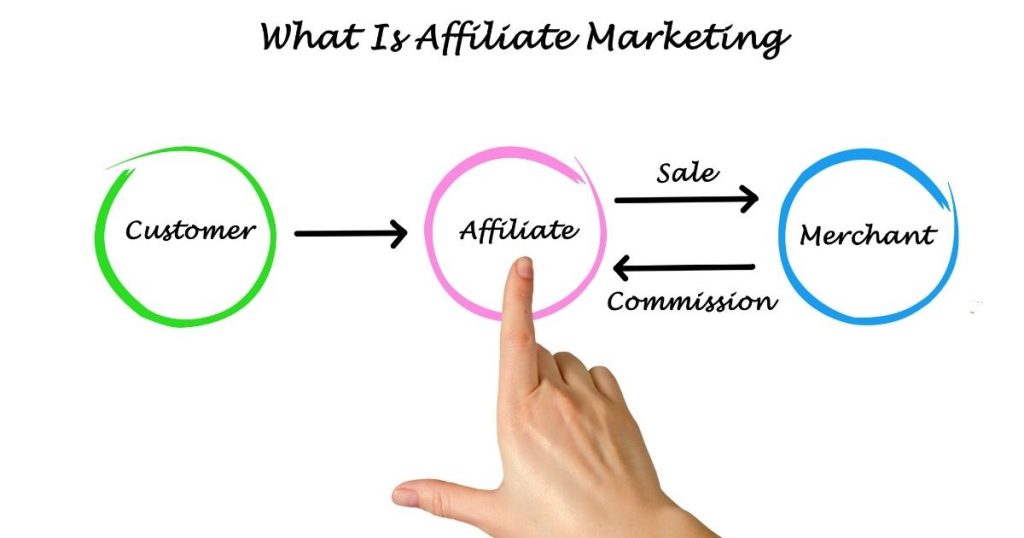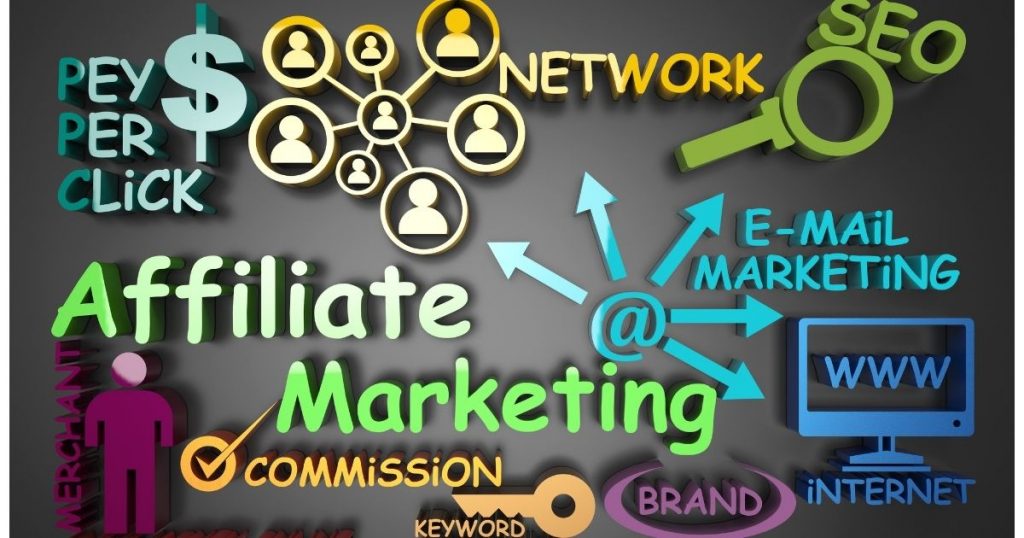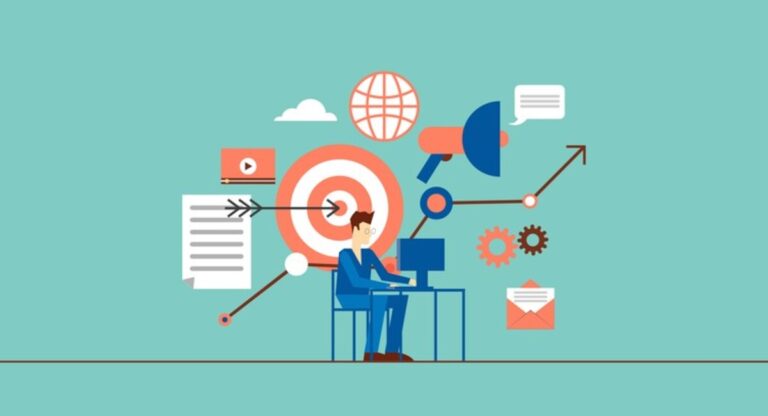Key Takeaways: Affiliate Marketing in a Nutshell
- It’s a Marathon, Not a Sprint: Affiliate marketing is a real business, not a get-rich-quick scheme. Success requires patience, consistency, and a focus on providing genuine value to an audience.
- Your Niche is Your Foundation: Don’t try to appeal to everyone. Choosing a specific niche allows you to build a loyal audience, establish authority, and create content that truly helps solve problems.
- Trust is Your Greatest Asset: People buy from those they know, like, and trust. Your primary job is to create helpful content (blog posts, videos, tutorials) that educates your audience, not just pushes products.
- A Website Isn’t the Only Way: While a blog is a powerful asset that you own, you can succeed using YouTube, TikTok, Instagram, and email lists. The key is to choose one platform and master it first.
- Program Choice Matters: The best affiliate program for you depends entirely on your niche. Amazon is perfect for beginners with physical products, while software companies often offer higher, recurring commissions.
What is Affiliate Marketing?

In simple terms, affiliate marketing is a process where you earn a commission for promoting another person’s or company’s products. You find a product you like and believe in, promote it to others, and earn a piece of the profit for each sale that you make. Think of yourself as a helpful, digital matchmaker. You connect people who have a specific problem or desire with the product that solves it for them.
Affiliate marketing for beginners can be a challenging path to navigate. So if you are the one, then this content is for you. You generally seek out a recommendation when you buy anything, whether it be from a friend, family, or any trusted source. Also, if you buy anything from an e-commerce site, check the star ratings and reviews of the product by customers who have already purchased it.
So, how would it be if you could become the trusted source whose recommendations people seek when buying anything, and that also helps you generate new cash inflow?
Affiliate marketing is mostly seen as a way to generate “passive income”. But that’s not all. You will have to develop relationships with affiliate brands, promote your brand, promote affiliate products and you need to write reviews of the products you are going to promote.
How the Affiliate Marketing Cycle Works (The 4 Key Players)?

The entire process runs on a simple, transparent relationship between four key groups:
- The Merchant: The creator of the product or service (e.g., Nike, a software company, a small business owner).
- The Affiliate (You): The person who promotes the product through their content (e.g., a blogger, a YouTuber, a social media influencer).
- The Affiliate Network: Often a middleman platform (like ShareASale or Impact) that handles the tracking, reporting, and payments to ensure everything is fair. Sometimes, the merchant runs their own program directly.
- The Consumer: The person who sees your content, clicks your unique affiliate link, and makes a purchase.
When you join a program, you get a special, trackable link. When a consumer clicks that link and buys the product, the network records that you were the one who sent them, and you get credit for the sale
Affiliate marketer (or affiliate) promotes a product or service by sharing it on a blog, social media, podcast, etc. Then affiliate earns a commission every time someone makes a purchase through the unique link associated with his/her recommendation.
When someone clicks the unique link, a small file called a cookie gets stored on their device. An affiliate cookie fulfills two purposes:
- It lets the merchant pin the sale to the actual person.
- It also holds an expiration date, so affiliates get paid even if the buyer delays the purchase.
A cookie’s lifespan decides how long the prospective buyer who clicks through your affiliate link might provide you a profit through a given campaign. For instance, suppose a seller sets the cookie duration to 60 days. This implies that affiliates have exactly 60 days to complete the deal, once a link has been clicked.
Commission rates vary depending on the company and the product. You can earn from 5% to as much as 50% in commissions, usually when promoting a class or event. There are also some affiliate programs that provide a flat rate per sale in place of a percentage.
How to get started with Affiliate Marketing?

There are five essential steps to building a sustainable affiliate marketing business from scratch:
- Find Your Niche
- Choose Your Content Platform
- Find Profitable Affiliate Programs
- Create Compelling Content That Converts
- Drive Targeted Traffic to Your Content
Find your Niche
This is the most critical step. A niche is the specific topic or audience you will serve. Instead of “fitness,” a niche would be “fitness for busy moms over 40.” Instead of “cooking,” a niche would be “vegan air fryer recipes.” Specificity is your superpower. It allows you to stand out from the competition and build a loyal following.
The 3 Elements of a Profitable Niche
A great niche sits at the intersection of these three circles:
- Your Passion/Interest: What do you genuinely enjoy learning about? You’ll be creating a lot of content, so it helps if you don’t get bored.
- Audience Problems: Are there real challenges, questions, or problems you can solve for people within this topic?
- Profitability: Are there products or services you can promote to solve those problems?
Actionable Steps to Validate Your Niche Idea
- Brainstorm: List 5-10 topics you’re passionate about. Think about your hobbies, your profession, or things you’re always helping friends with.
- Validate Demand: Use a free tool like Google Trends to see if public interest in the topic is stable or growing.
- Check Monetization: Go to Amazon, Google, or an affiliate network and search for “[your niche] products” or “[your niche] affiliate program.” If you find plenty of products to promote, you’re on the right track.
Choose Your Content Platform
You need a place to publish your content and share your affiliate links. Here are the best options for 2025. The secret is to pick ONE to start with and master it before expanding.
Option A: The Ownership Model (Starting a Blog/Website)
A blog is the most powerful long-term asset you can build. You own it, you control it, and it can generate free, passive traffic from Google for years to come through Search Engine Optimization (SEO).
Affiliate Marketing Beginner’s Blogging Toolkit
- Platform: WordPress.org. It’s the industry standard, offering complete control and flexibility.
- Hosting: A reliable beginner-friendly host (e.g., SiteGround, Bluehost).
- Theme: A fast, lightweight theme like Astra or Kadence. The free versions are incredibly powerful.
- SEO Plugin: Rank Math or Yoast SEO to help you optimize your content for Google search.
- Email Marketing Service: MailerLite or ConvertKit to start building your email list from day one.
Option B: The Visual Trust Model (Starting a YouTube Channel)
Video is arguably the best way to build trust quickly. Viewers can see your face and hear your voice, which creates a powerful human connection that is perfect for demonstrating and reviewing products.
Option C: The Discovery Model (Using Social Media & Short-Form Video)
Platforms like TikTok, Instagram Reels, and YouTube Shorts are incredible for reaching new audiences quickly. While not ideal for deep-dive content, they are perfect for grabbing attention and introducing people to products you recommend.
Can You Start Without a Website?
Yes, absolutely. Many successful affiliates use only YouTube, TikTok, or other social media platforms. You can place your affiliate links in your YouTube video descriptions, your Instagram bio (using a tool like Linktree), or directly in your content where allowed. A website gives you more control, but it is not a requirement to get started.
Find Profitable Affiliate Programs
Once you have your platform, it’s time to find products.
What to Look For in a Good Affiliate Program:
- Relevance: The product must be a perfect fit for your niche and audience.
- Quality & Reputation: Only promote products you believe in. Your reputation is on the line.
- Commission Rate: The percentage of the sale you receive. This can range from 1% to 50% or more.
- Cookie Duration: The length of time you’ll receive credit for the sale after someone clicks your link (30-90 days is excellent).
Understanding Program Types
Low-Paying, High-Volume Programs (e.g., Amazon Associates): Perfect for beginners.
These programs sell a huge variety of everyday products. The commission on any single item is low, but you can make a lot of sales. Amazon’s program is the classic example and the best place to start.
High-Paying, Low-Volume Programs (e.g., Niche Software, High-Ticket Items): More advanced, higher earning potential.
These programs sell specialized or expensive products. You’ll make fewer sales, but each commission can be substantial ($50, $100, or even $1,000+). This category includes things like software, online courses, and luxury goods.
Where to Find the Best Programs
Affiliate Networks (ShareASale, Impact, CJ)
Networks are marketplaces that host thousands of affiliate programs in one place. You can browse different niches, compare commission rates, and manage all your partnerships from a single dashboard. Impact.com and ShareASale are excellent, modern starting points.
In-House SaaS & Digital Product Programs (Recurring Commissions)
Many software (SaaS) and digital product companies run their own programs. The biggest advantage here is often recurring commissions. If you refer a customer to a subscription service, you get paid a commission every single month they remain a customer. This is the key to building predictable, passive income.
Create Compelling Content That Converts

This is where the magic happens. Your content is the bridge between your audience’s problem and the product’s solution.
The Golden Rule: Help, Don’t Just Sell
The most successful affiliates are teachers and problem-solvers, not salespeople. Your content should be 90% helpful and 10% promotional. When you genuinely help someone, recommending a product that can help them further is a natural and welcome suggestion.
The two rules of creating good content are being honest and having good knowledge of the topic, whether it’s a product/services review or a simple blog. This will help in creating your community of fans who will trust you for your recommendations
While making money is the main purpose of affiliate marketing, you also have a wonderful opportunity to build your audience, which in turn helps you make more money. You don’t need to please everybody, therefore the best thing you can do is to frame your review or blog with your audience in mind.
So even if someone reads your review or blog about some product, and then decides not to buy, that is not something you need to worry about. If one finds your review honest and detailed, he may probably return to look for your opinion on other products as well.
Just keep in mind, you are not an advertising agency. With honesty and a deep understanding of the product or service follow the AIDA format to create your content.
AIDA is a format for crafting persuasive content. But the goal is not actually to persuade the reader to buy the product but to convince him that you are an authoritative voice on this topic.
AIDA stands for:
A = Attention
Get your reader hooked immediately. Let them know why they should pay attention and keep reading. Use powerful words or an image that will catch the reader’s eye and make them stop and read your content
I = Interest
After getting hold of your reader’s attention, now it’s time to make them interested in your content. A good way of doing this is by involving their emotions. Talk about why it is you’re using this product and why you want to share your experience with it with people. Share some anecdotes if there are any.
D = Desire
The difference between interest and desire is the difference between wondering about something and actually imagining yourself using that something. If you responded well to a product or service, talk about why. Again, you’ll be appealing to your readers’ emotions, inviting them to relate to your positive experience and showing them that they can have that experience too.
A = Action
Your review should finish with a call to action. This may not necessarily have to be to buy the product even if you share your affiliate link. The CTA could be to subscribe to your blog, newsletter, or follow you or your company on social media.
With the fundamentals of AIDA in your mind as you craft your content, you should be able to create attention-grabbing and action-oriented content. You can also use ai content generators online for the first draft and then work on its improvement.
Content Types That Drive Affiliate Sales:
- In-Depth Product Reviews: Go beyond the features list. Share your real-world experience, the pros, the cons, and who the product is truly for.
- Product Comparison Posts (“X vs. Y”): Compare two or more popular products head-to-head. This is incredibly valuable for buyers who are close to making a decision.
- How-To Guides and Tutorials: Create a detailed guide that walks someone through solving a problem, and recommend products that help them do it along the way.
- “Best Of” Resource Pages: Create a curated list of the best tools and products for your niche (e.g., “The 10 Best Tools for Starting a Podcast”). This positions you as an expert.
These are things your readers will have an interest in and would absolutely love to hear your thoughts on. When you write reviews or blog posts on your niche topic you should be giving your honest opinion to readers.
Crucial: The Importance of Disclosure and Building Trust
Always disclose that you are using affiliate links. In many countries, like the US, it’s a legal requirement from the FTC. More importantly, it’s essential for building trust. A simple, clear statement at the top of your blog post or in your video description is all you need. Your audience will appreciate your transparency.
Drive Targeted Traffic to Your Content

This is also one of the very important things when you discuss affiliate marketing for beginners. Affiliate marketing beginners should know the strategies to drive traffic to their blog site.
After you have created good content. The next step is to get more and more people to read it so that you have a good chance that they will click on your affiliate links. You can create the best content in the world, but it’s useless if no one sees it. Here are the primary ways to get eyes on your work.
Strategy 1: Organic Traffic (SEO)
SEO is the practice of optimizing your content to rank high in search engines like Google. When you rank, you get free, highly-targeted traffic 24/7. It’s a long-term strategy, but it’s the most sustainable. This involves understanding what your audience is searching for (search intent) and creating the best possible content to answer their questions.
SEO is actually doing things mentioned below :
- understanding what your target customers are looking for in search engines.
- then creating content around those topics and
- finally doing some required things (which includes link building) to push these pages higher in the search engines
This is the best strategy for affiliate marketers as there is no monetary cost involved in this effort.
Strategy 2: Email Marketing
Email marketing is about getting the emails of your prospects through your website or other social media and communicating with them. Your email list is your single most valuable asset because you own it. You can contact your subscribers directly anytime, without worrying about algorithm changes. Offer a free checklist, e-book, or guide (a “lead magnet”) to entice visitors to subscribe.
To build an email list, you need to persuade the readers on your site to sign up by offering them something free like an eBook, an email course, etc. You can use the freebies to tell your subscribers about new content and keep them coming back to your site for more. This leads to more clicks and sales.
You can also send affiliate promotion emails to your list directly.
Strategy 3: Social Media Traffic
Use social media to share your content and engage with your community. Be an active participant in conversations related to your niche on platforms like X (Twitter), Facebook, or Reddit. Provide value first, and people will naturally become curious about your work.
Strategy 4: Paid Traffic
This involves paying for ads on platforms like Google, Facebook, or Instagram. It can bring results very quickly but is also risky and requires a budget. The advantage of paid traffic is that you get traffic by just paying. But the downside is, running ads will dig into your profits. Also, once you stop paying, your traffic will also stop.
Actually, ppc ads are a great traffic strategy if you are into a high-paying affiliate program. But if you are new to paid traffic and have no marketing budget then it’s not a good idea. You just need to focus on organic traffic.
For beginners, it’s best to focus on free traffic strategies first and explore paid ads only after you have a profitable system in place.
Getting clicks on affiliate links
There are a few things you need to consider if you want to get clicks on your affiliate link.
- You need to balance link placement in your content. For example, if your affiliate links are down the page then there is very little chance of them getting clicked.
- You also need to place the links in the right context. Otherwise, they will look spammy.
- Using callouts like tables, and boxes can grab your readers’ attention and make the posts easily readable.
- Don’t be in any kind of illusion that, just because you have a killer piece of content, people will click on your affiliate links.
Getting sales from clicks
In affiliate marketing, two kinds of conversions need to happen for you to earn a commission.
The first conversion is – click to the product page.
You are fully in control of this action. Use the above-mentioned strategies to drive traffic to your site to improve your chances of getting that click.
The second conversion is – visitor purchasing the product.
Since the merchant controls the checkout, these types of conversion rates are out of your control. The trick is to look for merchants with programs that convert well. There are few ways to find them:
- Read online reviews about the company and get to know how the company and its products are rated.
- Look at public income reports where bloggers reveal how much money they are making from their affiliate programs. Search for these reports in search engines. For example, if you search for “income report clickfunnel affiliate”, you’ll see a few blog posts showing how bloggers have made money from Clickfunnel. If affiliates are making good money then that program is converting well.
- If there isn’t much information available about an affiliate program you want to join. Then you need to sign up and ask questions.
This can help you figure out if the affiliate program is worth promoting.
Conclusion: Your Path to a Sustainable Affiliate Business
Affiliate marketing is not a lottery ticket. It is a real, legitimate business model that has created financial freedom for countless people. It rewards patience, consistency, and a genuine desire to help others.
You now have the complete, updated roadmap. You know how to find your niche, choose your platform, find products, create valuable content, and get it in front of the right people.
The only thing left is to take the first step.
FAQ
Is affiliate marketing easy?
It’s not easy for beginners. But if you follow the steps mentioned in this article and be patient then gradually you’ll start making good money.
Is affiliate marketing dead in 2025?
Affiliate marketing is not dead but it is becoming more challenging now. Every day the competition is increasing which will make affiliate marketing difficult. But still, if you know how to choose the right products to promote, how to create killer content, how to drive traffic to your online asset where you are promoting products, and finally converting prospects to customers, then you’ll be unstoppable.
Why do most affiliate marketers fail?
There could be many reasons why many affiliate marketers fail. But it boils down to failing in strategy to promote the product and get customers to buy.
How long does it take to make money?
This varies, but it’s realistic to expect it to take 6 to 12 months before you see consistent income, especially if you are relying on free traffic from SEO. Success depends on your niche, your consistency, and your ability to build trust with an audience.
Can I do affiliate marketing without a website?
Yes, absolutely. You can be a successful affiliate marketer using only a YouTube channel, a TikTok account, an Instagram profile, or an email list. The key is to have a platform to reach an audience and a place to put your affiliate links (like your YouTube description or a “link in bio” page).
What’s the difference between an affiliate network and an in-house program?
An affiliate network (like ShareASale) is a marketplace with many different merchants in one place. An in-house program is run directly by the company itself. In-house programs can sometimes offer better commissions and support, but networks provide convenience and variety.
How do affiliates get paid?
Most affiliate programs pay out via direct deposit to your bank account or through a service like PayPal. Payments are typically made monthly after you have reached a minimum payout threshold (e.g., $50 or $100).
How much does it cost to start affiliate marketing?
It can be started for very little cost. Using platforms like YouTube or TikTok, your only investment is your time. If you start a blog, your initial cost will be for a domain name and web hosting,


